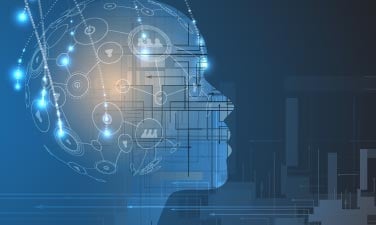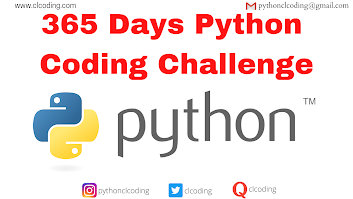Artificial intelligence is evolving fast, and one of the most exciting frontiers is Reinforcement Learning (RL) — a branch of ML where agents learn by doing, interacting with an environment, receiving feedback, and improving over time. When combined with deep neural networks, RL becomes Deep Reinforcement Learning (DRL) — powering AI that can play games at superhuman levels, optimize industrial processes, control robots, manage resources, and make autonomous decisions.
Deep Reinforcement Learning with Python is a practical book that helps bridge the gap between theory and real implementation. It teaches you how to build intelligent, self-learning models using Python — the language most AI practitioners use — and equips you with the tools, techniques, and best practices that are crucial for working with reinforcement learning systems.
Whether you’re a student, developer, ML engineer, or AI enthusiast, this book can take you from curiosity to competence in this cutting-edge field.
What You’ll Learn — Core Topics & Takeaways
Here’s what the book covers and how it structures your learning:
1. Reinforcement Learning Fundamentals
Before diving into code, it’s essential to understand the basics:
-
The RL problem formulation: agents, environments, actions, states, rewards
-
How learning happens through trial and error
-
Markov Decision Processes (MDPs) — the mathematical foundation of RL
-
Exploration vs. exploitation trade-offs
This foundation is key to understanding why RL works the way it does.
2. Deep Learning Meets Reinforcement Learning
The book bridges deep learning with RL by showing:
-
How neural networks approximate value functions or policies
-
The difference between classical RL and deep RL
-
Why deep learning enables RL in high-dimensional environments (images, complex state spaces)
By doing this, you’ll be ready to build RL agents that can handle real, complex tasks beyond simple toy environments.
3. Core Algorithms & Techniques
You’ll learn some of the most important RL algorithms used in research and industry:
-
Value-based methods (e.g., Deep Q-Networks or DQN)
-
Policy-based methods (e.g., REINFORCE algorithms)
-
Actor-Critic methods (blending policy and value learning)
-
Advanced variants like Double DQN, DDPG, PPO, etc., depending on how deep the book goes
Each algorithm is explained conceptually and then brought to life with code.
4. Python Implementation & Practical Coding
Theory alone isn’t enough — the book emphasizes building systems in Python:
-
Using popular libraries (TensorFlow or PyTorch) to define neural networks
-
Integrating with simulation environments like OpenAI Gym
-
Writing training loops, managing replay buffers, handling reward signals
-
Visualizing training progress and debugging learning agents
With practical examples, you’ll gain hands-on competence — not just theory.
5. Real-World Applications & Case Studies
Seeing theory in action makes learning meaningful. Expect examples such as:
-
Agents learning to play games (classic CartPole, MountainCar, Atari titles)
-
Simulated robot control tasks
-
Resource management and optimization problems
-
Models that adapt policies based on feedback loops
These applications illustrate how RL can be used in real scenarios — whether for research, products, or innovation.
6. Best Practices & Practical Tips
Reinforcement learning can be tricky! The book also helps you with:
-
Tuning algorithms and hyperparameters
-
Avoiding instability during training
-
Managing exploration strategies
-
Scaling to larger environments
These best practices help you move from demos to sound, reproducible RL systems.
Who Should Read This Book?
This book is ideal for:
- Students and learners who want a practical introduction to deep RL
- Developers and engineers curious about autonomous AI systems
- ML practitioners who know basic machine learning and want to go deeper
- AI enthusiasts inspired by applications like autonomous robots and intelligent agents
- Professionals transitioning into AI research or engineering roles
If you’re comfortable with Python and have some knowledge of basic machine learning concepts, this book will take you to the next level by introducing reinforcement learning in a structured, hands-on way.
Why This Book Is Valuable
Here’s what makes this book worth your time:
Beginner-Friendly Yet Comprehensive
It presents RL clearly, but doesn’t shy away from advanced techniques once the basics are mastered.
Practical Python Workflows
Code examples help you build running systems — not just read math.
Real-World-Relevant
From game-playing agents to simulated control, examples mirror real AI tasks.
Strong Theoretical and Conceptual Foundation
Ideally balances intuition, math, and hands-on building skills.
What to Expect — Challenges & Tips
-
Math Intensity: RL involves probability, dynamic programming concepts — brushing up on these helps.
-
Compute Resources: Training deep RL agents can be computationally heavy — GPU access helps with larger environments.
-
Experimentation: RL often requires careful tuning and patience — training may not converge immediately.
-
Debugging: RL systems can be sensitive to reward shaping and exploration strategy — logging and visualization help.
This is not a “quick toy project” book; it’s a serious skill upgrade.
How This Can Boost Your AI Career
After studying and practicing with this book, you’ll be able to:
- Build autonomous agents that learn by interacting with environments
- Understand modern RL algorithms used in research and industry
- Contribute to fields like robotics, self-driving, gaming AI, simulation optimization
- Add an advanced, sought-after skill to your AI/ML toolkit
- Design and develop next-generation AI that can adapt, explore, and learn
Reinforcement learning sits at the intersection of AI research and cutting-edge applications — skills here signal readiness for advanced roles.
Hard Copy: Deep Reinforcement Learning with Python: Build next-generation, self-learning models using reinforcement learning techniques and best practices
Kindle: Deep Reinforcement Learning with Python: Build next-generation, self-learning models using reinforcement learning techniques and best practices
Conclusion
Deep Reinforcement Learning with Python is a practical, accessible guide that demystifies one of the most exciting areas of machine learning. By combining deep learning with feedback-driven learning strategies, reinforcement learning gives machines the ability to learn from interaction — not just data.
Whether you’re a student, developer, or ML practitioner, this book provides a solid path from curiosity to competence. Expect transformations in your understanding of AI agents, neural-network-based policies, and how intelligent systems can be trained to solve complex, dynamic problems.








.png)
.png)








.png)










.png)























